Spring 2023
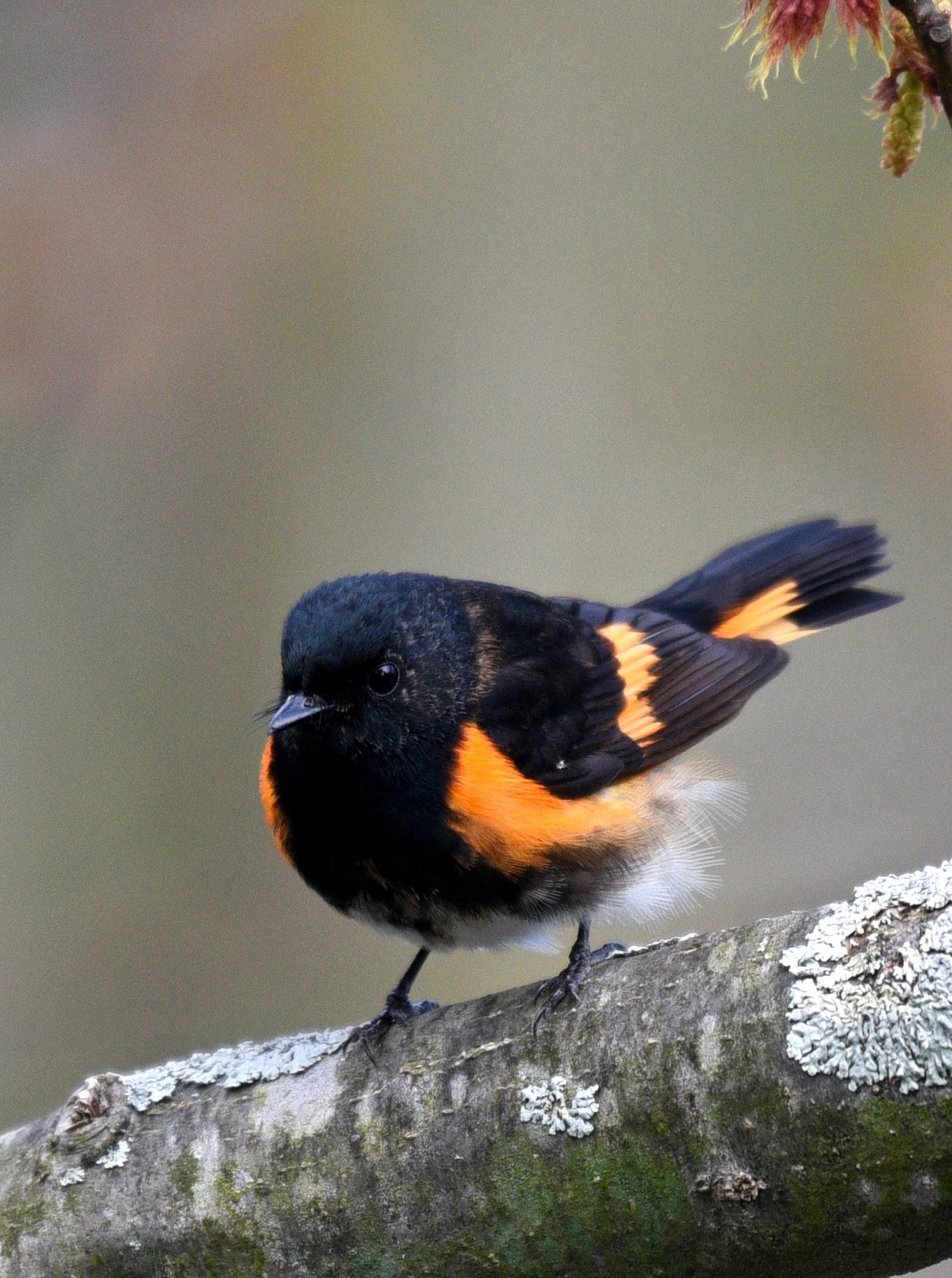
panorama
Page 4 Prescribed Burns Page 5
8
Spring Ephemerals
Foraging Styles Page
HELEN BOOMSMA Executive Director
Welcome to spring! Enjoy the renewed sunlight and warmth as the earth wakes up once again! In this issue of Panorama, read about prescribed burning, a land management practice our conservation team uses to maintain the health of prairies. Learn the science behind prescribed burns, as well as why and how we conduct them at the Center. Read about what you’ll see on our trails as spring returns. Gain knowledge of spring ephemeral wildflowers, some of the species you may encounter in the forest, and how they grow and reproduce. Discover what foods local birds love to eat and learn about some of their interesting foraging behaviors.
For many, birding is one of spring’s highlights. Enjoy a visit to the Center to take in the sights and sounds of migration! Our trails open at 7:00am for birding from April 22 through June 4.
We are hosting numerous programs for beginning and experienced birders alike. Join others for Saturday Morning Bird Walks in search of birds utilizing the Center’s diverse habitats. Enjoy Birding Exploration, where participants take early Sunday morning guided hikes led by experienced birders to learn about the identification, behavior, and ecology of resident and migratory birds. At Avian Adventure, families will visit a variety of bird-themed stations celebrating Wisconsin’s year-round residents and our migrating feathered friends. In addition, look for a Bird Photography Workshop, Bird Conservation in Coffee, field trips, and more! On June 22, Wingspan & Wine, where attendees sample wine while meeting our birds of prey, returns with a Mediterranean theme. To see all our birding programs, check the birding filter on our online calendar.
To help visitors identify species commonly seen on our trails, we created Birds of Schlitz Audubon, a pocket folding guide available in our Nature Store. While birding at the Center during regular hours, we also have a limited number of binoculars available to checkout. These Nikon 8 x 42 binoculars are free for use by members while on our trails and $10 for the general public. When you aren’t on the trails, view birds on our Feeder Cam. This handy tool allows you to see birds visiting Schlitz Audubon from anywhere when you access our website’s birding section.
When you visit this spring, you will likely notice that we are deep into restoring a piece of the land near the corner of Lake Drive and Brown Deer Road. This plot of dead ash, buckthorn, and low-quality understory is being converted into a vibrant and diverse hardwood swamp that will provide habitat for a variety of plant, bird, and other animal species. Once the project is complete, we will have transformed one of the most degraded areas of the property into one of the most lively and beautiful.
Until then, we have six miles of trails to explore over 180 acres. We hope you come to enjoy the brightness and green of spring!
BOARD OF DIRECTORS
Officers
Shane Delsman
President
Evan Kirkstein
Treasurer
Benjamin T. Pavlik
Secretary
Barbie Brennan Nelson
VP-Development
John Schaub
VP-Governance
Directors
Joseph A. Camilli
Renee M. Clair
Amy Giuffre

Therese Gripentrog
Jonathan T. Luljak
Carrie Nichols
Leia C. Olsen
Jeff Rusinow
Lindsay Stevens
Past Presidents
John H. Kopmeier, Jr.
Philip R. Smith
Dennis L. Fisher
Terrence K. Knudsen
Thomas J. McCutcheon
Thomas B. Fitzgerald
Randolph H. Dean
Stephen F. Geimer
Thomas J. Drought
David K. Hoover
John S. McGregor
Margarete R. Harvey
Timothy J. Gerend
John Grunau
Aliah Berman
Director Emeritus
Dorothy K. Vallier (1910-2013)
CREDITS FOR PANORAMA
Director of Marketing & Communications
Nancy Quinn
Creative Lead | Design & Photography
Zoe Finney
Editing | Select Writing
Craig Mattson
Admission
FREE admission to Members
Adults: $8 | Youth: $5 (ages 3 — 17)
1111 East Brown Deer Road | Milwaukee, WI 414-352-2880 | www.schlitzaudubon.org
Hours
Monday - Sunday | 8:30am-5:00pm
Early Birding Hours
April 22 - June 4 | Trails open at 7:00am
Schlitz Audubon is an independent, locally supported partner of the National Audubon Society.
WELCOME Spring 2023 | www.schlitzaudubon.org 2
COVER PHOTO An American Redstart
Welcome to our new board member!
Joseph A. Camilli | von Briesen & Roper, s.c.
Discover the signs of spring
ABBY SAXTON Naturalist
Spring is upon us, with the emergence of new plants, the return of migrating birds, and the awakening of dormant species; tree buds, reptiles, and amphibians alike. As life begins to quicken in pace with the changing of the seasons, take a slow walk in nature using your senses with intention to notice these signs of spring.
One of the season’s highlights is the return of migrating birds. Among the first to visit in April and May are waterfowl such as the Wood Duck and Blue-winged Teal. Visit Wood Duck Pond or Mink Pond along the West Meadows Loop, and you may hear the whistling of Wood Ducks flying overhead or see their bright orange bill and green head on the shore. Hike to Dragonfly Pond and Teal Pond to observe the Blue-winged Teal, with their distinct cheetah-patterned wings and white-striped head.
The Center becomes a birding hotspot in May due to our location on the Mississippi Flyway along the shore of Lake Michigan as more species make their trips back north. Among the most abundant are the warblers; 36 species stop in southern Wisconsin, creating a swarm of vibrant colors and sounds. Look for the bright sunlight colored Yellow Warbler, Wilsons Warbler, and Black-throated Green Warbler. These birds can be seen from May to June throughout the tree canopy in our forest habitats.
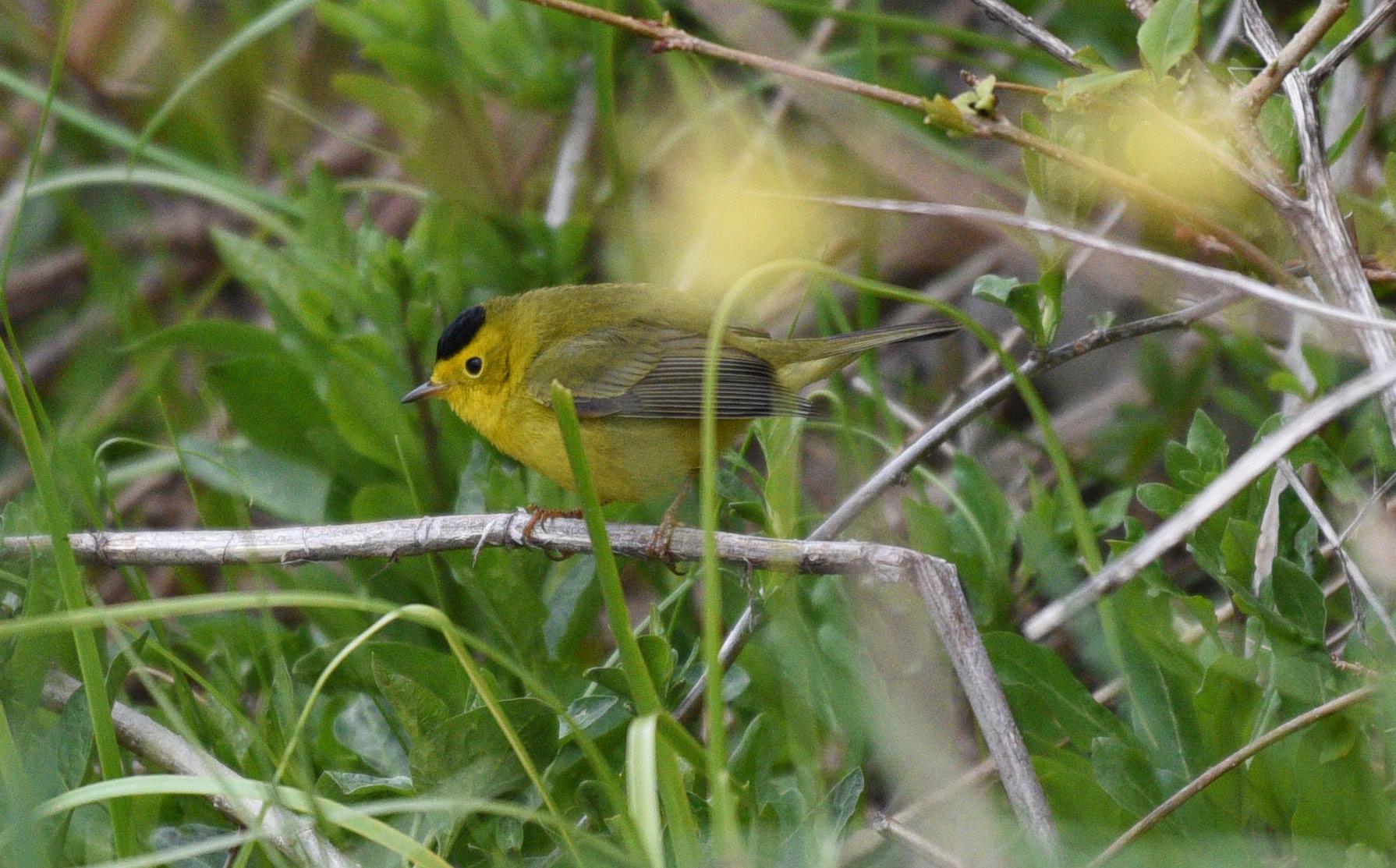
As soon as the wetlands and ponds thaw, brumating reptiles and amphibians reappear. In early April, during the day, look for little painted turtle heads starting to poke above the surface of the water on our ponds. Closer to evening, tune in to the songs of frogs like the spring peeper and boreal chorus frog. Named for its high-pitched call, the spring peeper makes a distinct “Peep, Peep!” The songs of the chorus frog sound similar to running a thumb across a hair comb.
While taking a walk in the forested areas of the Center, such as the Lake Terrace Loop or the Central Wetlands Loop, look up at the towering trees above and notice the newly budding branches. The dormant green giants are waking up with the weather as their buds begin to turn into leaves that will later produce food for the tree through photosynthesis. Closer to the ground, the buds of red-osier dogwood trees are being nibbled on by white-tailed deer. You can easily locate these dogwood trees as they reside in clusters and have bright red branches in the spring. Their buds will turn into bright white flowers in June, providing pollen for returning migrators such as the monarch butterfly and hibernators like the rusty-patched bumble bee.
The Center is the perfect place to observe the first signs of spring. From the forests and ponds, to the shore of Lake Michigan, experience the changing of the seasons by taking a close look at nature.
SEASONAL SIGHTINGS
3 Spring 2023 | www.schlitzaudubon.org
Wilson's Warbler
Beyond the Beauty of Spring Ephemerals
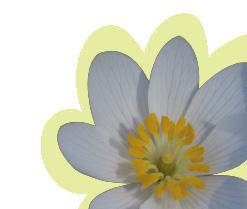 AUBREY ELLICKSON FULSAAS Children's Events Coordinator
AUBREY ELLICKSON FULSAAS Children's Events Coordinator
When spring arrives in the forest, sunlight beams down between still bare branches, warming the leaf litter that engulfs the forest floor. Sprinkled among the shades of brown is the bright green shimmer of new life, pushing through towards the light. These plants, known as spring ephemeral wildflowers, offer the first feeling of rebirth and rejuvenation in the forest community. Ephemeral, a term synonymous with temporary, is used to describe certain natural phenomena that last a short time before disappearing.
If all flowering plants bloomed at the same time, competition for resources such as sunlight, water, space, and pollinators would prove detrimental for most species. Ephemeral plants have evolved to take advantage of the early spring conditions within the forest, where the sunlight is able to reach beneath the tree canopy for a short period of time before tree leaves burst from dormant buds. This period, typically lasting from late March to early May, is characterized by slightly warmer temperatures and moist soil from snowmelt and rain. Ephemeral plants are perennial, with root structures that lay dormant under the soil for most of the year, blooming for only a few days before going to seed. Some of these ephemerals, such as the great white trillium (Trillium grandiflorum), take almost ten years to develop from seed to flowering plant. They bide their time, conserving energy to take full advantage of the unique spring conditions.
The first flowers of this season provide much-needed sources of pollen and nectar for insects coming out of hibernation or migrating back to Wisconsin. Dutchman’s , a unique spring ephemeral with white flowers resembling a row of royal pantaloons, is exclusively pollinated by bumble bee queens as they come out of hibernation. These fertile queen bees fuel up with nectar as they begin creating a new ground nest. Some may even choose their nesting locations based on the abundance of early spring flowers.
Once pollination is complete and seeds are developed, the flowers disappear within days of their arrival. The small seeds now need to travel away from the parent plant and find a suitable area for new growth. The seeds are being transported by a miniscule but mighty creature – the ant.
Up to 35 percent of understory plants - including trilliums, bloodroot, violets, hepatica, Dutchman’s breeches, trout lilies, and rue-anemone – exclusively rely on ants to disperse their seeds. These seeds have evolved to have external fat-rich attachments known as elaiosomes. The ants carry the seeds back to their colonies to feed the elaisomes to their larvae, eventually discarding the unharmed seed in a nutrient-rich pile perfect for plant growth.
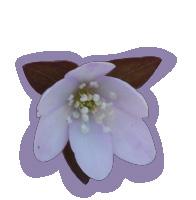

The journey the seed takes is only six feet from the parent plant. This short distance prevents populations of ephemerals from adapting and spreading quickly, so clusters of plants are extremely vulnerable to disturbance. Spring ephemeral populations require a late successional forest, and can take up to 20 years to reestablish themselves among the forest understory. Invasive species, such as European buckthorn, garlic mustard, or dames rocket can quickly choke out the space and nutrients required for native plants to succeed.
It takes a healthy, well-balanced forest to support a variety of beautiful spring ephem erals. Ongoing land res toration and preser vation allows Schlitz Audubon to boast an abundance of these unique and transito ry plants within our forests every spring season.
EDUCATION 4 Spring 2023 | www.schlitzaudubon.org
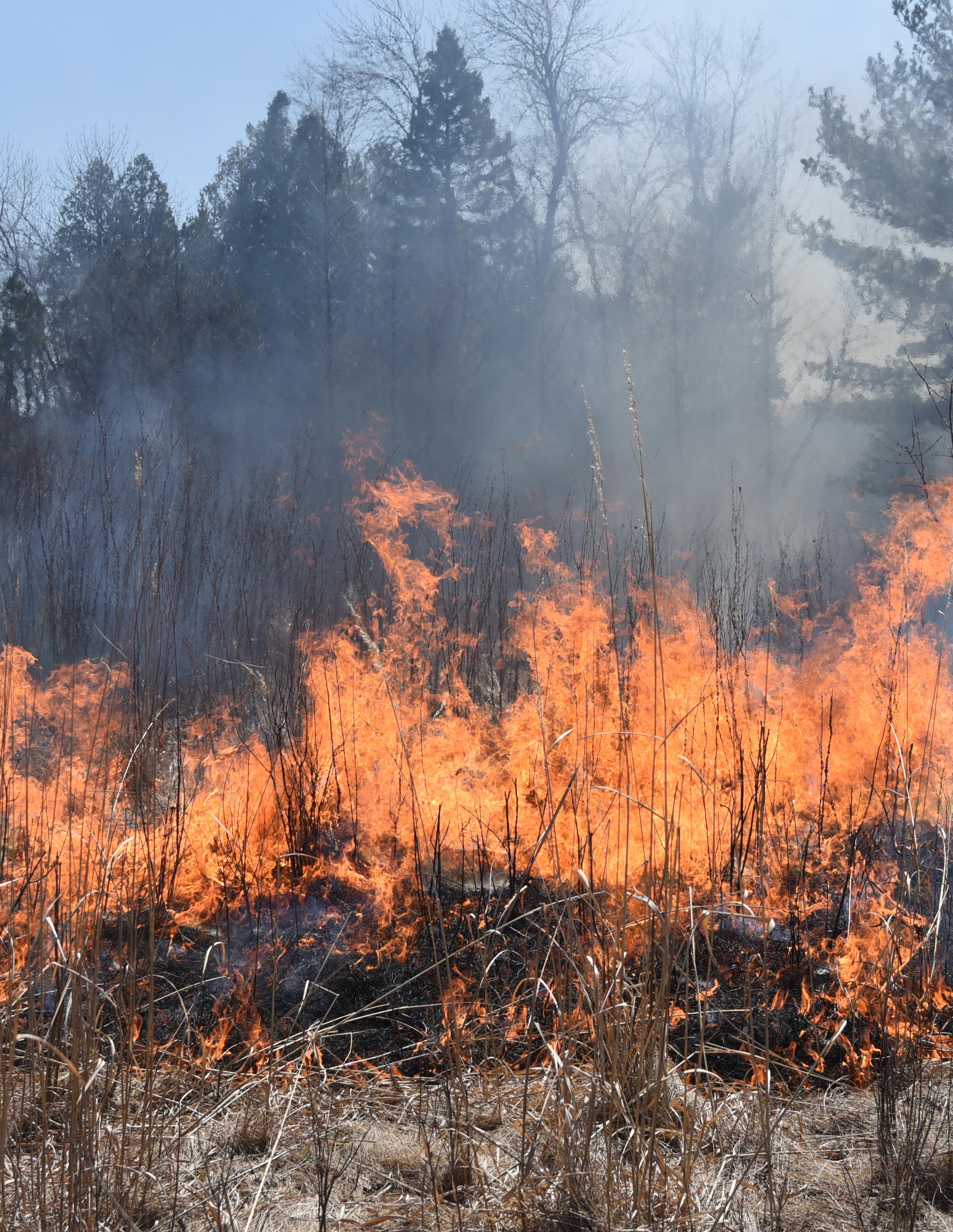
FEATURE Spring 2023 | www.schlitzaudubon.org 5
CRAIG MATTSON Communications Specialist
With contributions from Drew Shuster
Prescribed burns are a useful and effective tool for land managers to maintain prairie habitats. Burns benefit the land in different ways depending on when they are conducted. Spring burns curtail the growth of several species of undesirable plants, which ultimately helps overall prairie health, while fall burns promote wildflowers.
Controlled burning of prairies has a far-reaching historical precedent. Native Americans conducted burns to maintain prairie habitat so bison herds would flourish. The fires mimicked the effects of lightning strikes and kept the prairies healthy, while creating the conditions needed for good hunting land.
Schlitz Audubon plans to conduct prescribed burns in several of our prairie habitats in early spring of 2023 if conditions are favorable. Ideally, prescribed burns are done in the same area every two to five years. Holding to this frequency is considered optimal to reap the longer-term rewards of burning and to keep certain plant growth at bay.
THE SCIENCE BEHIND PRESCRIBED BURNS
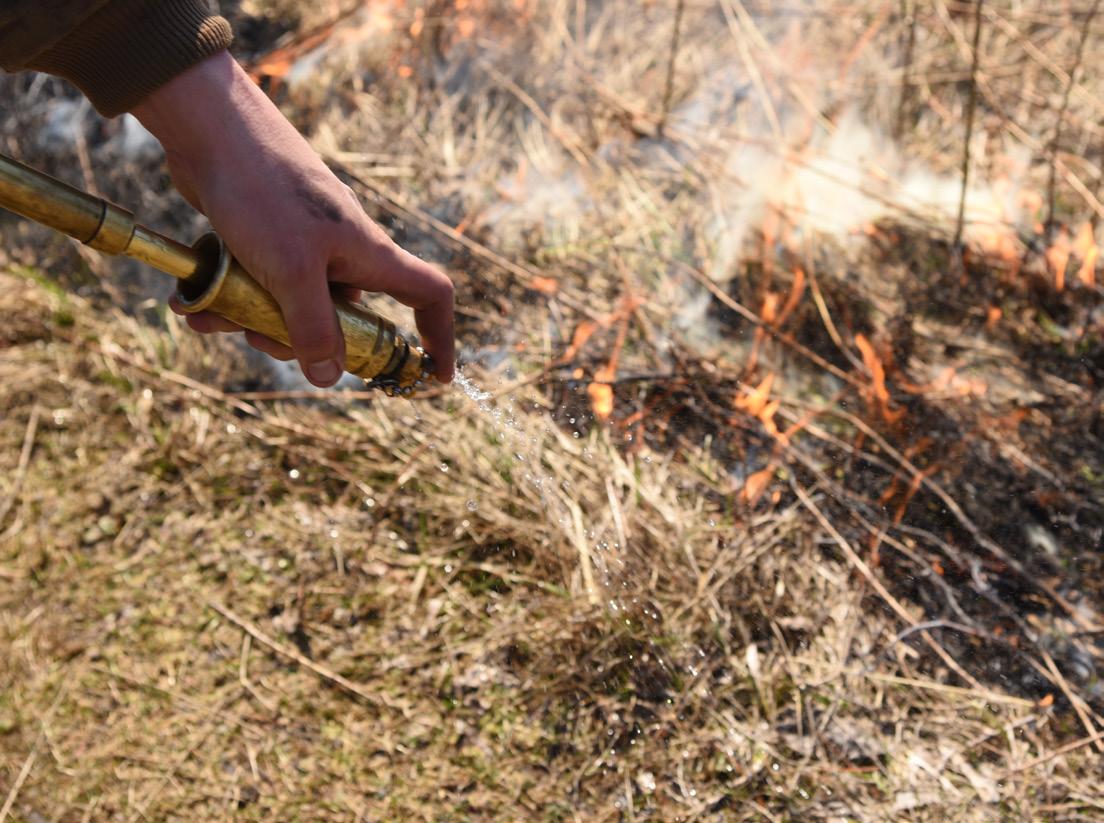
There is a science behind prescribed burns that forms the basis for creating a flourishing habitat. First, a prescribed burn removes the duff layer, which consists of old plant detritus, opening space in the ground layer for new, desirable plants. After the spring thaw, the grasses are matted down and burn more thoroughly, killing the grasses underneath. An early spring burn (before the growth of warm season grasses) will stop cool season grasses, controlling non-native Eurasian plant species, as well as prevent woody stemmed plants from growing.
A burn creates blackened soil, whose dark color absorbs and holds onto sunlight more readily than unburned soil, increasing its temperature. The warmth stimulates the growth of warm season grasses, including big bluestem and Indian grass, which will grow prolifically after a burn.
Prevention of woody growth, including dogwoods, ash trees, and buckthorn, is a key factor in managing prairies. Burns remove woody plants, preventing the land from turning into a forest habitat. Not all trees are killed during a burn, however. Species like oaks have adapted thick bark, which shields them from the flames. Only large oaks, however, have bark thick enough; young ones need to be protected by land managers.
PREPARING FOR A BURN
Great care is taken to prepare for a prescribed burn. Safety is the number one priority! Each season, one of the first steps the Center’s land management team undertakes is creating a burn map. This shows all areas to be burned, as well as the placement of firebreaks, which are areas of ground where nothing is flammable. At Schlitz Audubon, we also consider the presence of visitors and students, so they remain safe.
WEATHER CONDITIONS FOR A PRESCRIBED BURN
The Center’s land management team will begin to watch wind speed and direction, temperature, and humidity leading up to the day scheduled for a burn, and especially on the day of the burn. Drew Shuster, Director of Conservation, said a desirable and safe wind speed is 5-15 mph. The slow speed helps prevent the appearance of unpredictable fire, which can get away from the planned burning locations. The optimal temperature is 4060 degrees; above 80 degrees it’s considered hazardous, while at temperatures below 32 degrees, the fire won’t burn.
Humidity is an important factor in determining the effectiveness and safety of a potential burn. Relative humidity determines how hot a fire will burn on prairie grasses. Drew likes to conduct a burn at 20-60 percent humidity. Above 60 percent, the fire burns poorly, and below 20 percent, fire is considered hazardous. Compared to other areas in our region, the air near Lake Michigan is more moist due to the lake effect, so this also needs to be taken into consideration.
The burn crew gauges wind direction. In an urban or suburban setting, such as Schlitz Audubon, controlling the direction of smoke is of great importance. The wind affects the smoke’s movement and the effectiveness of the burn breaks. A change in wind direction can present challenges by causing the fire to become unpredictable.
THE BURN CREW
Only people experienced with prescribed burning should participate. At the Center, there are a number of staff and volunteers involved. Some, such as the burn boss, focus on overseeing the entire process, while the line crew will focus on setting or tending the fire. There are also people who watch the fire to make sure it doesn’t jump to an unplanned spot.
To keep the fire under control, the line crew uses backpack sprayers to shoot a focused stream of water where it is needed.
FEATURE 6 Spring 2023 | www.schlitzaudubon.org
A volunteer using a backpack sprayer to control the fire.
The water prevents the fire from spreading in directions other than where it is needed to go. They also use fire swatters and flappers to control the direction and growth of the flames.
THE PROCESS OF CONDUCTING A PRESCRIBED BURN
There are some naturally occurring firebreaks, which include a road, a body of water, or a trail. If they are not present naturally, firebreaks are created. This may be done by mowing an area of the prairie to remove material such as drier grasses. It is also accomplished by burning an area of land to remove the flammable material. It is important to create these non-flammable areas, so fire doesn’t spread beyond its desired location.
A typical burn will have firebreaks on three sides, creating a U shape. The main portion of the burn is done within a U shape, using a stepladder formation to coordinate the flames, called head fires. Once the U is formed, the crew begins by lighting a fire on a small strip across the U, creating one step of the ladder. The wind pushes the fire forward, down the U, into the break at the bottom. Then, once the first strip area of the step has burned, they move up the U to do the next strip. Each step is burned in succession until the entire area within the U shape is complete. This method keeps the fire under control.
WHAT VISITORS WILL NOTICE
This year, our land management team and their volunteers will use prescribed burns in the West Meadows, on the Terrace’s prairie, and in an area south of Molly’s Pond. About a week afterward, visitors will notice green shoots rising through the “black,” a term describing the area where all the soil is blackened from the burn. People will also see vigorous bird activity in this area, as insects become abundant.
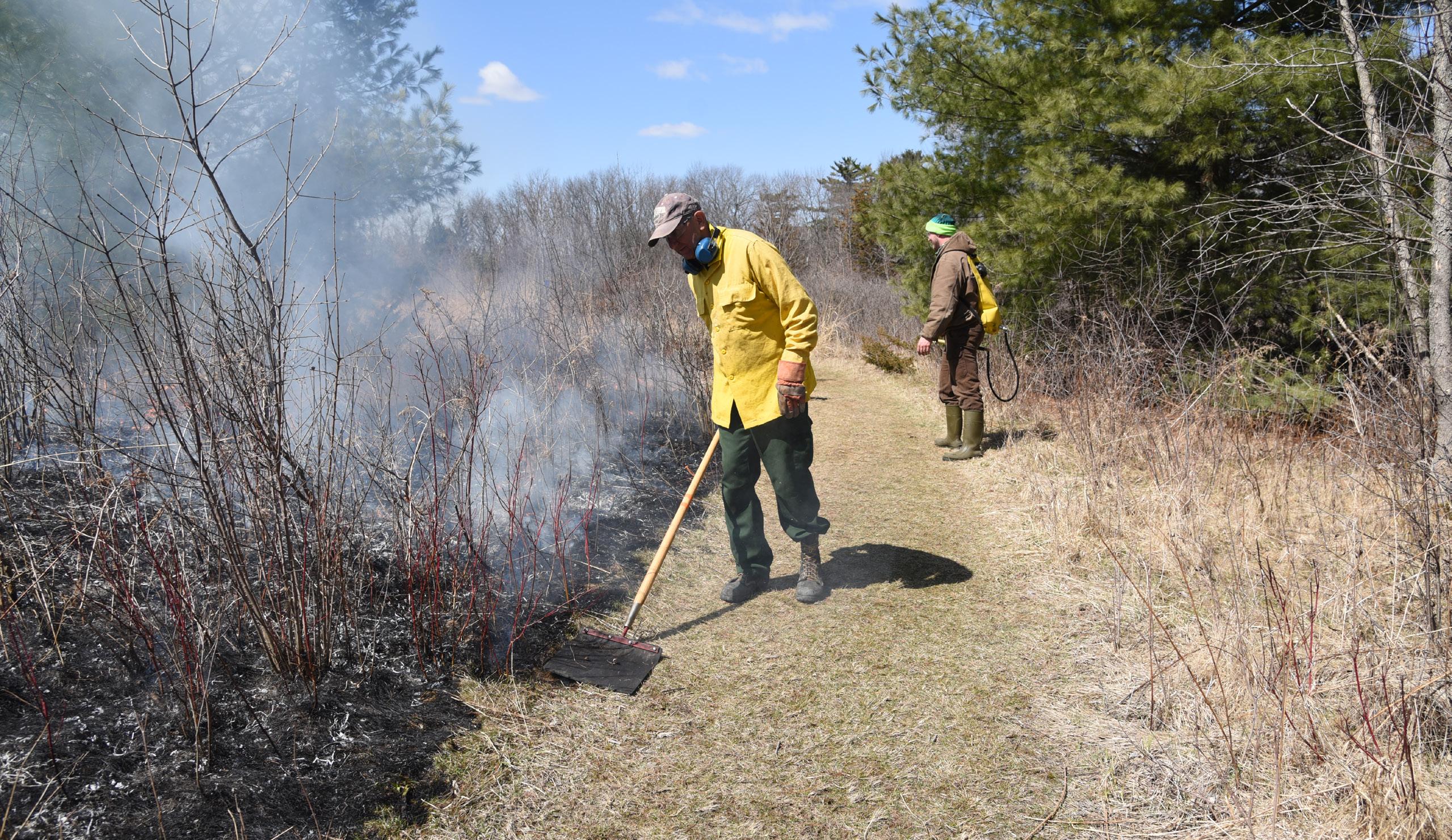
Then, after a couple of weeks the warm season grasses will begin to grow, and ultimately, they will be almost two feet taller than they would be without the burn. The enhanced growth will last from 1-2 years, and visitors will see the difference when the burned areas are in proximity to unburned areas and can compare the heights of the grasses. After this period the grasses will resume growing to their shorter, more commonly seen height.
At the Center, it's necessary to use prescribed burns to prevent the prairie from returning to forest. Our prairies are prime locations for wildlife, education, and people’s enjoyment. Maintaining the prairie is important to continue providing such good habitat for prairie wildflowers, insects, and the animals that dwell on prairie lands. Visit the Center later this spring to witness the effects of this wonderful conservation activity in person.
FEATURE 7 Spring 2023 | www.schlitzaudubon.org
A volunteer controlling the perimeter of a prescribed burn at Schlitz Audubon in the West Meadows.
Bird Foraging Methods
MICHELLE ALLISON Adult Programs Manager
Birds search for food using a variety of foraging methods depending on what they eat. It can sometimes be challenging to see how small birds forage, but learning about their physical traits and behaviors can help. Take note of some of the characteristics common to local birds who forage on plant food, such as seeds, fruit, and nectar, as well as those who forage on insects and other invertebrates. It will help you identify them and how they find food.
When foraging on plant sources, one important factor in determining how birds obtain nutrition is bill shape. Some birds, such as American Robins and Cedar Waxwings, have bills ideal for eating small fruits and berries. Ruby-throated Hummingbirds insert their long bills into tubular-shaped flowers to feed on nectar.
Seed-eating birds, like finches, show a great diversity of behavior and bill shape. Birds in the sparrow family display a characteristic thick, triangular shaped bill used for cracking seeds. Some sparrows, like Eastern Towhees, forage on the ground using a double scratch method. Jumping straight up, they swing their feet forward then rake backwards against the ground, kicking out leaves and debris. Then they search the ground to see what food they may have uncovered.
Black-capped Chickadees are frequent visitors to bird feeders, where they may fly off with a seed to store in a hidden location. This behavior is called caching. During a harsh winter, a chickadee may store thousands of seeds in a process called scatter hoarding, tucking food into tree crevices or anywhere they can hide it for later retrieval.
Insects become a more common food source in the warmer months. Birds use a variety of techniques to catch insects to feed themselves and their young. Gleaning is a method used by birds to pick insects off leaves, branches, or other surfaces. This can be done in several ways. Many warblers, like the Blackburnian Warbler pictured, use perch gleaning, when a bird grabs prey while remaining on a perch. Red-eyed Vire-
os and chickadees often utilize sally gleaning, watching nearby vegetation for movement. When an insect is located, the bird flies out to grab it. Some birds, such as kinglets and Great Crested Flycatchers, practice hover gleaning, in which the bird will actually hover over the vegetation, picking food from the surface.
Aerial insectivores, such as Barn Swallows and Chimney Swifts are often seen flying over ponds and open fields where they are adept at catching insects in midair. Many flycatcher species, including Eastern Phoebes and Eastern Kingbirds use the technique called hawking, in which a bird waits on a perch, flies out to catch an insect from the air, and returns to the same perch.
Some birds probe with their beaks to find insects and other invertebrates. Woodpeckers provide an excellent example of this, as we see them hammer into a tree to find invertebrates like beetle larvae, ants, and caterpillars. Brown Creepers maneuver up tree trunks as they probe, peck, and glean insects from crevices in the bark, while White-breasted Nuthatches also probe tree trunks, but tend to work their way down the tree. American Woodcocks use their long, straight bill to explore the forest floor in search of earthworms and other food.
Many birds are able to forage for both plant-based sources of food as well as insects. Black-capped Chickadees have an assorted set of foraging skills. Their diet consists of both plant and animal sources including seeds, berries, insects, spiders, and caterpillars, among others. Yellow-rumped Warblers are adept at catching insects with their thin bills as well as picking fruit small enough for them to eat, such as poison ivy berries.
When you visit the Center, observe birds at the feeders, on tree trunks, near vegetation, or in the sky while you’re on our trails. If you look closely at the birds’ behavior, try and notice all the different foraging methods you can identify.
EDUCATION Spring 2023 | www.schlitzaudubon.org
8
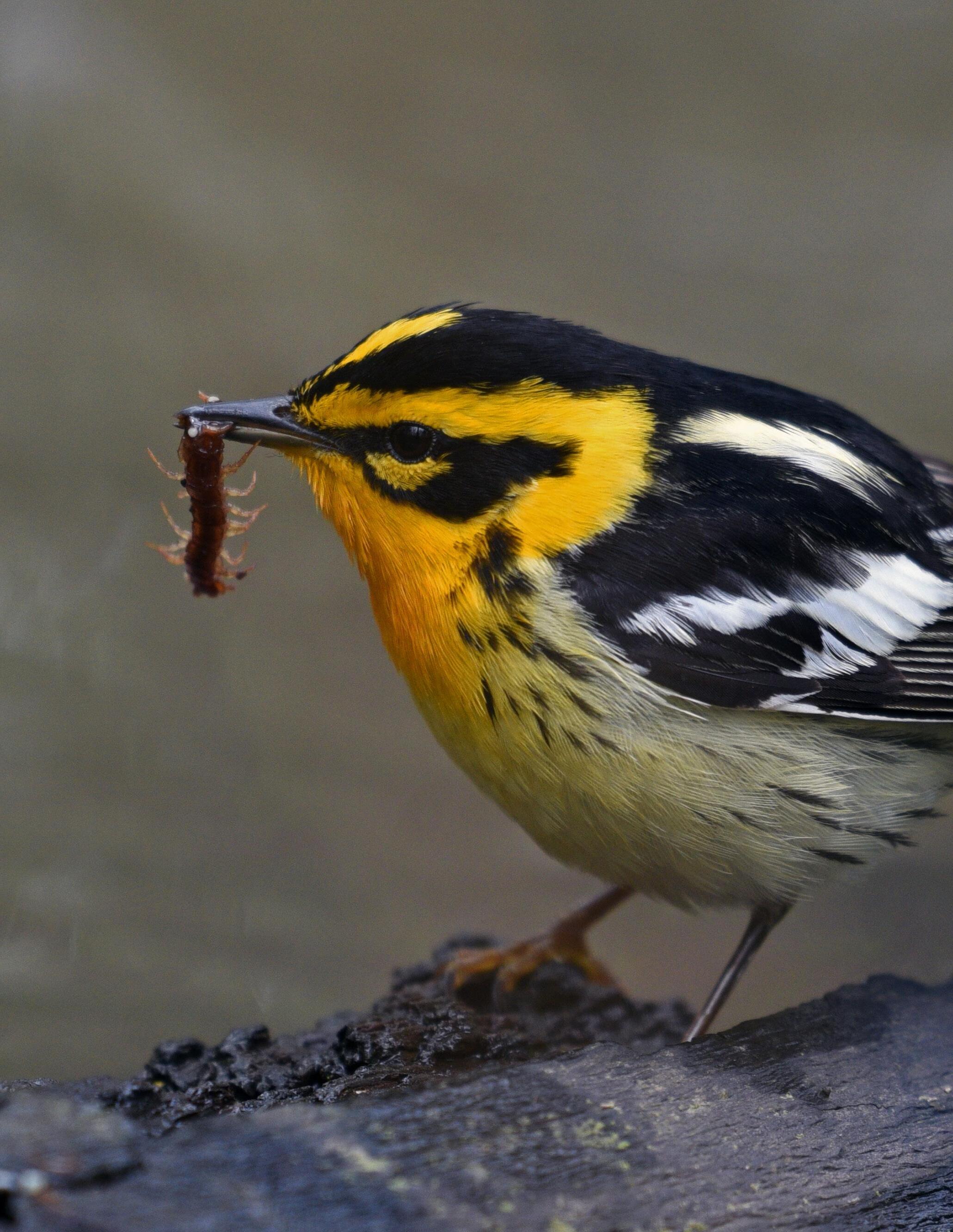
EDUCATION 9 Spring 2023 | www.schlitzaudubon.org
In Memory Of In Honor Of
Bonnie Behee-Semler
Robert Amich
James P. Connelly
Burton and Carla Bartlett
Rick and Grace Battistoni
Cissy and Tom Bell
Ellen Bladorn
Suzy and David Boerke
John and Laurie Chester
Mary and James Connelly
Randolph and Kathleen Dean
Beth D. Frankey
Ann and Jon Hammes
Anita and Tom Hauske
Al and Kathy Krug
George and Carol Milne
Mr. and Mrs. Allen Morgan, Jr.
Andy Read and Suzy Hauske
David and Kris Reicher
Mr. and Mrs. Robert J. Schuemann
Jay and Madonna Williams
LuAnne Ehr
James and Joan Judziewicz
Paul M. Hauer
Mark Hauer
Jimmy Keller
Craig and Kari Keller
Martha Lunz
David Haase
Terry and Carole Knudsen
Alfredo and Liberty Lui-Perez
Thomas and Judith Wick
Jean Pagel
Henry and Judy Eckstein
Karen Lee Radtke
Jay and Stephanie Radtke
Frederick R. Ruenzel
Christy and William Breihan
Joe and Lorna Hilyard
Dorothy K. Singer
Catherine Singer
Matt Singer
Barbara Stein
Peggy A. Ward
OSS
Charlene Neitzel
Mary Norman
Theresa Wells
Honorary Trees: A Living Tribute
Catherine Farrenkopf
Pat Bakula
Richard and Charlotte Halfman
Brad and Nancy Halfman
Carrie Hiestand
Ryan Hanley
Helen Johnson-Leipold
The Johnson Outdoors Executive Team
Terrence K. Knudsen
Dan and Kay Esposito
Catherine Koons Hubbard
Marjorie and Jim Pines
Jennifer MacKinnon & Peter Ensch
John and Connie Kittleson
Mason
Rosalie Borda
John N. Pearce
Mr. and Mrs. Joseph R. Purpura
Don Quintenz
Marilyn Hauer
Bob Roska
Chelsea and Tim Hren
Ellen Marie Silverman
Melissa Tessmer
Susan Strecker
Christine and Norman Littig
Kevin, Kristin, Signe, and Zoe Wright
Pam and George Wright
Amanda Zarder Anonymous
Planting or adopting a tree can be a powerful way to celebrate and honor your loved ones. You will secure a touching, living tribute to those who you cherish, while providing benefits for future generations by protecting and enhancing the habitats that you care about. Choose from three honorary tree options.
Restore Native Habitat - $500
Many choose to have a tree planted as part of a large-scale habitat restoration project. Over the coming growing season we’ll be planting swamp white oak trees in the Hardwood Swamp, a powerhouse habitat that, when restored, will support several locally-rare plant and animal species. Located off trail, these trees will continue to grow, change, and improve this habitat for decades to come.
Adopt a Favorite - $1,000
A special tree can bring us back to a happy moment in time. The Center is home to many unique, established trees, one of which may have already taken root in your heart. Any tree at the Center can be adopted, helping us to maintain the longevity of the tree for its full life span. By sponsoring an established tree, your support helps our Conservation team keep the forest healthy.
Gifts listed in this issue were received between 10/1/22 – 12/31/22
Plant a Trailside Tree - $1,500
Another, limited-availability option allows you to “visit” your tree to watch as it changes and grows throughout the seasons. Working in tandem with Center staff to choose a well-suited species and location, you can have a tree planted in view of a trail, where it can be treasured for years to come.
To learn more about tree planting options at Schlitz Audubon, please contact us at giving@ schlitzaudubon.org.
10 DEVELOPMENT Spring 2023 | www.schlitzaudubon.org
Raptor Sponsorships
Athena – Barn Owl
Megan Bennett
John Fleischman
Michelle Herro
Shea McCreight and Janice Rae Sandrin
Katie Podmokly
In Honor of Duke Richard Gordon
Kathie Gordon
In Honor of Sandy Heim
Marcel De Ridder
In Honor of Phil Recht
Donna Recht
Atlas – Red-shouldered Hawk
Anonymous
Michelle Herro
Katie Podmokly
Ken and Barb Wardius
Baron von Screech – Eastern Screech Owl
Alycia Aldaz
John Fleischman
Michelle Herro
Keke Lewandowski
Amanda Zarder
In Honor of Sam Hall
Katie Hall
In Honor of Amelie Newton
Nicolette Deveneau and Ryan Newton
In Honor of Landry Newton
Nicolette Deveneau and Ryan Newton
Gimli – Eastern Screech Owl
Kathleen Dahl
Michelle Herro
Ariel Namowicz
Katie Podmokly
In Honor of Petey Chambers
Rosa Flanagan
In Honor of Ellen Conley
Ellen Conley
In Honor of Johnny Frey
Jodi Reilley
In Honor of Ben Olson
Tracy Olson
In Honor of the Rothe grandbabies
Patricia Rothe
Glory – Bald Eagle
Kendall Dolmyer
Michelle Herro
Peter and Michelle Source
Jim and Cathy Toohey
In Honor of Dad & Mallory
Bob and Linda Mlynarek
In Honor of Krista, Klaus & Helena Wintersberger
Rick and Victoria Wintersberger
Loki – American Crow
Alejandro Arellano
Ellen Boerner
Jessica Fredrickson
Michelle Herro
Dawn Tuchel and Frederick Ellner
Valerie Young
In Honor of Maddie Boyd
Mary Burgdorff
In Honor of Ren Johnson
Leif Johnson
In Honor of Nathan Olson
Tracy Olson
In Honor of Gavin Rozansky
Gus and Ann Kaufmann
In Honor of Milo Shrubb
Edwin Thaves
Malary – American Kestrel*
Cody Dangelser and Jessica Behrens
Michelle Herro
Catherine Maerzke
Amanda Zarder
In Honor of Adrienne Turnbull-Zupke
Andrew Zupke and Jessica Turnbull
Nicco – Broad-winged Hawk
Michelle Herro
Don Laferty
Deb Newberry
Amanda Zarder
In Honor of Tyler Triebenbach
Lauren Triebenbach
Otis – Peregrine Falcon
John Fleischman
Michelle Herro
Dalyn Ward and John Mei
In Honor of Zoe Heim
Marcel De Ridder and Sandra Heim
Perseus – Barred Owl
Michelle Herro
Sherry and Richard Lundell
Janet Otte
In Honor of Forrest
Lauren Janzen
In Honor of Emily Olson
Tracy Olson
Sky Walker – Red-tailed Hawk
Alexander Daron
Michelle Herro
In Honor of Darcy Grier
Janice Wesolowski
In Honor of the Rothe grandbabies
Patricia Rothe
In Honor of Alex Rothstein
Alex and Dr. Abby Rothstein
Tallulah – Turkey Vulture
Ellen Boerner
Michelle Herro
Rebekah Krieger
In Honor of the Cashman Family
Jade and George Cashman
In Honor of Jack Heim
Marcel De Ridder and Sandra Heim
Tucker – Eastern Screech Owl
Erin and Terrance Cram
Susan Fink and Michele Dziaba
Michelle Herro
Mary Hoehne
Janet Otte
Katie Podmokly
Zachary Schaefer
Katie Walsh
Valkyrie – Bald Eagle
Chris Hawley
Michelle Herro
Patty Kugel
Brook and Bret Mayborne
Timothy Taylor
In Honor of Bob
Bob and Cato Schley
In Honor of the Darbys
Claire Stillman
In Honor of John & Bobbie Gates
Samantha Gates
Willow – Northern Saw-whet Owl
Anonymous
Ellen Boerner
Cody Dangelser and Jessica Behrens
Michelle Herro
Ellen Hing and Chris Leadley
Peter and Michelle Source
Edwin Thaves
In Honor of Jack and Zoe Heim
Marcel De Ridder and Sandra Heim
In Honor of Morgan Heling
Ellen Conley
In Honor of the Rothe grandbabies
Patricia Rothe
In Honor of Simon Rothstein
Alex and Dr. Abby Rothstein
In Honor of Amy Willinger
Ann Williamsen
Zari – Great Horned Owl
Ann Becker
Antony Ludwig
Chad and Krista Pankop
Jennifer Schaeflein
In Memory of Malary the American Kestrel*
Michelle Herro
*Malary the American Kestrel passed away in December of 2022.
Gifts listed in this issue were received between 10/1/22 – 12/31/22
DEVELOPMENT 11 Spring 2023 | www.schlitzaudubon.org
SPRING

U.S. Postage PAID Milwaukee, WI Permit No. 4168
Schlitz Audubon
Nature Center 1111 East Brown Deer Road Milwaukee, Wisconsin 53217
2023 PANORAMA




 AUBREY ELLICKSON FULSAAS Children's Events Coordinator
AUBREY ELLICKSON FULSAAS Children's Events Coordinator






